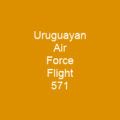Jeju Air Flight 2216: A Tragic Loss of Lives
Imagine a serene flight journey that was supposed to bring joy and relief to passengers, only to turn into a nightmare. On December 29, 2024, Jeju Air Flight 2216, scheduled to fly from Bangkok to Muan International Airport in South Korea, faced an unimaginable tragedy. A bird strike during approach caused the landing gear not to deploy, leading to a belly landing that overran the runway and crashed into a concrete structure supporting an antenna array. The accident resulted in the heartbreaking loss of 179 lives, including all 175 passengers and four out of six crew members.
The Unexpected Mayday
At 8:54 a.m., as the plane was authorized to land, it received a warning about a bird strike. The pilots immediately broadcasted a mayday alert, signaling an emergency situation. They were initially advised to go around but later received permission to land in the opposite direction after their landing gear failed to deploy. This decision was made with the hope of saving as many lives as possible.
The Crash and Its Aftermath
Between 9:03 and 9:07 a.m., the plane belly landed on the runway, overshot by 250 meters before colliding with an embankment. The impact caused partial damage to the airport infrastructure, and local residents reported hearing explosions and seeing flames. Two crew members were rescued from the tail section of the aircraft—one at 9:23 a.m. and another at 9:50 a.m.
The fire was extinguished within 43 minutes, but the aftermath was far from over. Firefighters switched to recovery operations by 1:36 p.m., setting up temporary facilities for families of victims. Regular airport operations were suspended until January 7, 2025, as investigations began.
Investigations and Findings
The cause of the landing gear failure was presumed to be a combination of adverse weather conditions and a bird strike. Feather remnants found on one of the engines confirmed this theory. Muan International Airport has a high rate of bird strikes due to its proximity to major bird habitats and feeding grounds, highlighting the need for better management strategies.
Professor Choi Kee-young noted several issues that contributed to the crash: thrust reverser and wing flaps not working as expected, unusual use of only one engine’s thrust reverser, and the aircraft traveling too fast. The short interval between the mayday call and the crash suggested a judgment that a belly landing was safer than staying airborne without power.
The presence of a barrier violated international safety standards, leading to the crash. Airport officials stated that the localizer was raised due to terrain, but its placement was still questionable. A berm with a concrete pillar supported the localizer and had existed since the airport’s opening, with a new modification adding a concrete slab on top in 2023. Localizers are usually installed at ground level or slightly above; this one was too close to the end of the runway.
The crash was influenced by safety issues with localizer support structures. Police searched for evidence, including mobile phones from passengers, and authorities moved the wreckage for digital forensic analysis. The government declared Muan Airport a special disaster zone and issued national mourning until January 5, 2025, setting up 90 memorial altars in 17 cities nationwide.
Impact on Jeju Air and South Korea
The tragedy had far-reaching consequences. A Boeing B737-800 operated by Jeju Air experienced problems with its landing gear shortly after taking off from Gimpo International Airport on December 30, leading to a decrease in bookings and reduced winter flights by 10-15% for maintenance work.
Authorities inspected all Boeing 737-800 aircraft operated by South Korean airlines, with inspections set to be completed by January 3, 2025, and then extended to January 10, 2025. Families of the victims formed a support group, saying no funerals would be held until their relatives were identified. The first funeral was held on January 2, after all fatalities had been identified.
More than 5,500 individuals volunteered to assist affected families at Muan airport, with over 18,000 people visiting a joint memorial altar. Suspended President Yoon Suk Yeol expressed condolences, and both his party and the opposition Democratic Party agreed to investigate the crash. Jeju Air apologized for the accident, its CEO released an apology, and the airline deployed employees to assist victims’ families.
Conclusion
The tragic loss of 179 lives in Jeju Air Flight 2216 serves as a stark reminder of the importance of safety measures in aviation. As we reflect on this devastating event, it is crucial that lessons are learned and implemented to prevent such tragedies from happening again. The resilience and support shown by families, volunteers, and officials during this difficult time highlight the strength of human spirit in the face of adversity.

You want to know more about Jeju Air Flight 2216?
This page is based on the article Jeju Air Flight 2216 published in Wikipedia (retrieved on January 11, 2025) and was automatically summarized using artificial intelligence.






